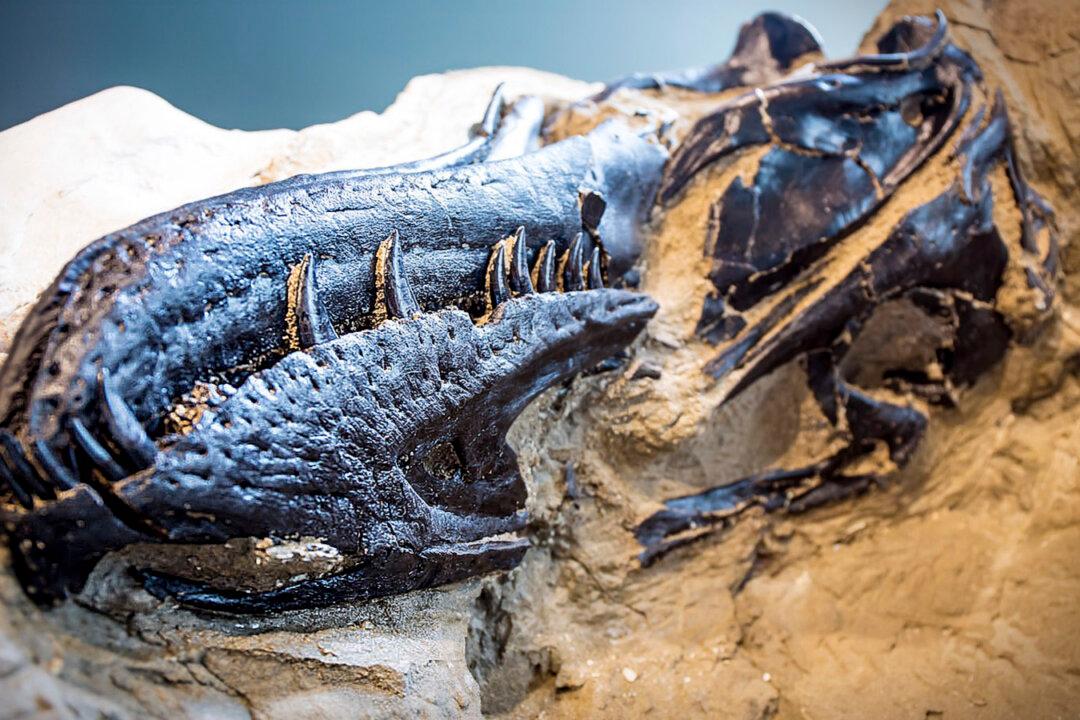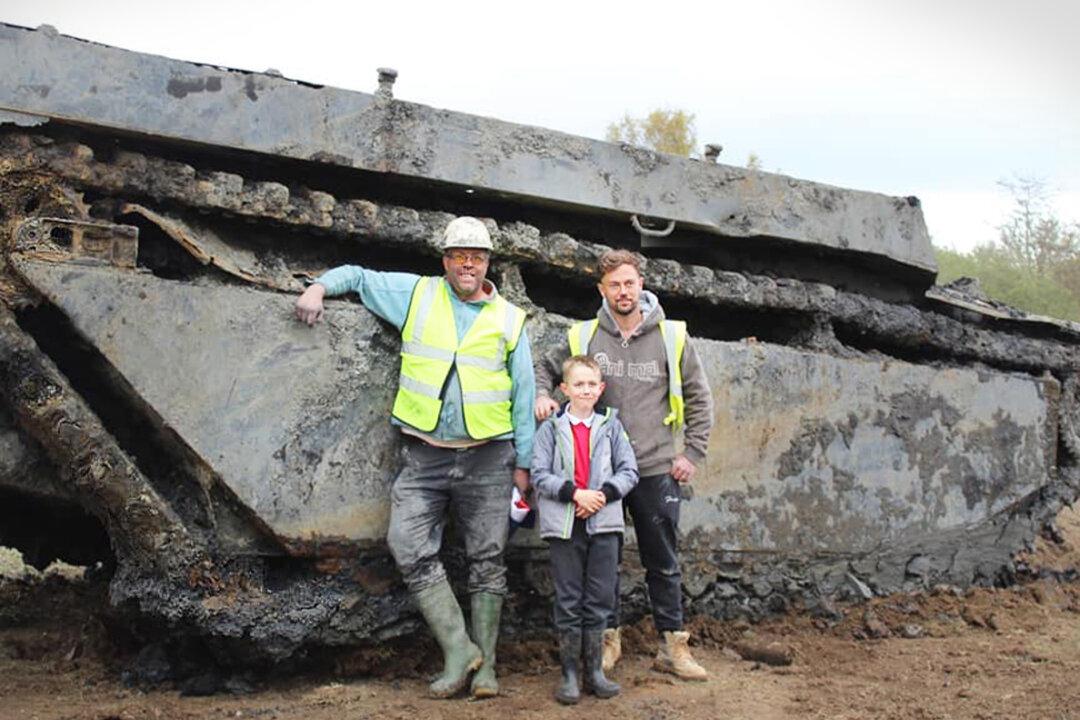Paleontologists have uncovered the remains of a young tyrannosaurus rex and a triceratops buried in Hells Creek, Montana. The two dinosaurs appear to have been dramatically locked in battle at the time of their deaths.
The fossils were moved to the North Carolina Museum of Natural Sciences, and the museum announced on Nov. 17 that they plan to display the bones in the aptly named exhibit “Dueling Dinosaurs.”






